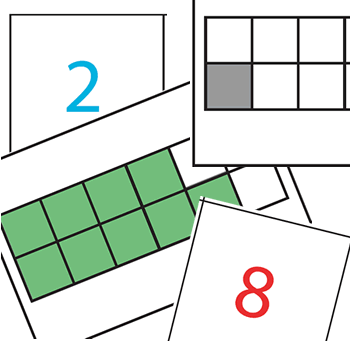Or search by topic
Number and algebra
Geometry and measure
Probability and statistics
Working mathematically
Advanced mathematics
For younger learners
Even and Odd



This activity is best done as a whole class or in a large group.

You will need to split up into four smaller groups: a black group, a blue group, a green group and a red group.
Each group will need the set of cards which has the same colour as their group name. Here are the sheets which will need printing off and cutting into separate cards: black cards, blue cards, green cards, red cards.
In your group, can you pair up your cards so that each number card goes with a card which has a picture of that same number of coloured squares?
Use interlocking cubes, such as Multilink, to make the numbers on your cards in the same way as the pictures of coloured squares. For example, here is the number 9 represented with Multilink cubes:

Nine is an odd number. Could you tell this from looking at the diagram of the block of cubes? Eight is an even number. How would the shape of the block of eight cubes differ?
Choose two of your numbers made from Multilink. What happens when you add them by fitting the two Multilink 'blocks' together? What kind of number do you get? Is it odd or even?
Choose a different pair of numbers and add them in the same way. What do you get this time? Is the number odd or even?
In your group, try this in as many different ways as you can.
You could record what you are doing in some way.
When do you get an odd number?
When do you get an even number?
Can you explain why?
You may also like
Let's Investigate Triangles
Vincent and Tara are making triangles with the class construction set. They have a pile of strips of different lengths. How many different triangles can they make?

